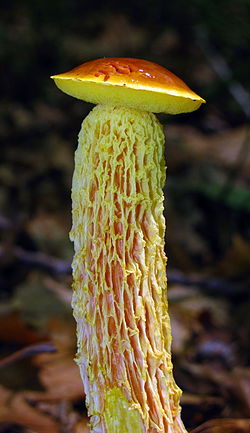| Heimioporus | |
|---|---|
 | |
| Heimioporus betula | |
| Scientific classification | |
| Kingdom: | Fungi |
| Division: | Basidiomycota |
| Class: | Agaricomycetes |
| Order: | Boletales |
| Family: | Boletaceae |
| Genus: | Heimioporus E.Horak (2004) |
| Type species | |
| Heimioporus retisporus | |
| Species | |
15, see text | |
| Synonyms [1] | |
Heimioporus is a genus of fungi in the family Boletaceae. [3] The genus is widely distributed in tropical and subtropical regions, and contains about 15 species. [4]
Contents
The genus name of Heimioporus is in honour of Roger Jean Heim (1900-1979), who was a French botanist (Mycology) and Director of the National Museum of Natural History, France in Paris. [5]
The genus was circumscribed by Egon Horak in Sydowia vol.56 on page 237 in 2004.